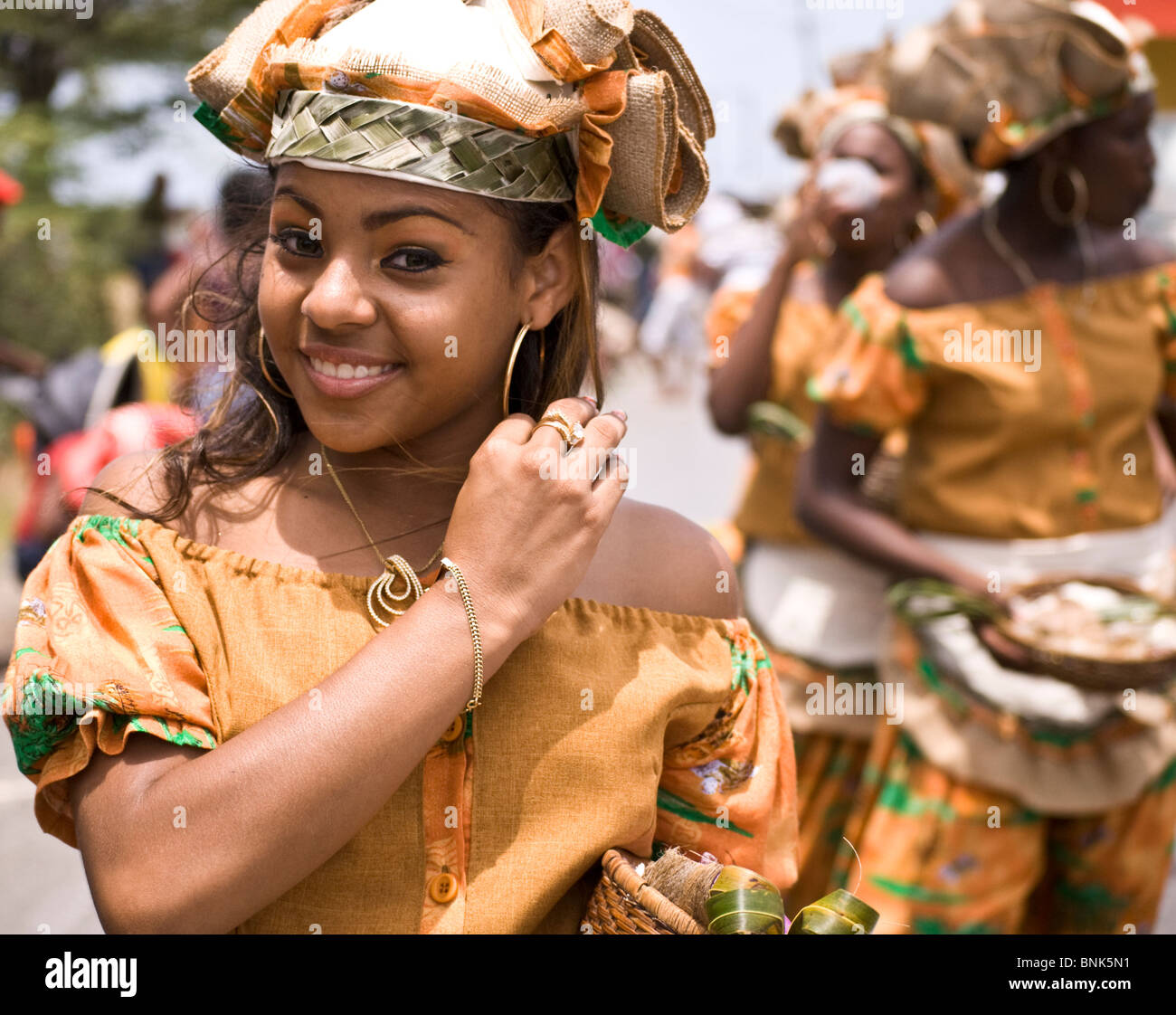Attractive local girl takes time out for a photograph during one of the dance routines, Seu Festival, Curacao

Image details
Contributor:
Hello World Stock Library / Alamy Stock PhotoImage ID:
BNK5N1File size:
24.2 MB (997.4 KB Compressed download)Releases:
Model - no | Property - noDo I need a release?Dimensions:
3263 x 2592 px | 27.6 x 21.9 cm | 10.9 x 8.6 inches | 300dpiDate taken:
24 March 2008Location:
Willemstad, Curacao, ABC Islands, Netherland Antilles, CaribbeanMore information:
The Seu Folklore Festival or Harvest Festival is a unique celebration that takes place the Monday after Easter Sunday. Throughout the seventeenth, eighteenth and nineteenth century the economy of Curaçao thrived mainly on commerce. The soil was too dry and there was very little rainfall to develop agricultural activities of importance on the island. Curaçao possessed a few small plantations where agriculture was mainly for own consumption. The workers sung African chants while working in the fields. At night, they would gather in small groups to compose new work songs. They produced the rhythm for the songs by stroking on a large dried calabash shell with their finger tops. The calabash was positioned upside down in a wooden tub filled with water. The water muted the sound in order not to disturb the landowners who were not very fond of the music. At harvest time the landowners were more lenient and permitted the workers to play on drums, made from barrels with goatskin stretched over the top, iron parts of their working tools, cow-horns and conch-shelves (which were also used to send messages), while they carried the harvest to the depositories. The men and women formed parades, sang and developed dance steps while carrying out this activity. After the harvest, the landowners permitted the workers to organize festivities and celebrate as an expression of gratitude. The type of music, songs and dance produced during those festivities were all entitled Seú. Today, the celebration is continued by cultural groups, and seu musicians play instruments made from conch shells, cow horns, and hollow gourds. Parade marchers of all ages dress in muslin and sack cloth similar to the clothing worn by slaves and march through the streets of Punda and Otrobanda, districts of Willemstad.